- BOAT OF THE YEAR
- Newsletters
- Sailboat Reviews
- Boating Safety
- Sailing Totem
- Charter Resources
- Destinations
- Galley Recipes
- Living Aboard
- Sails and Rigging
- Maintenance
- Best Marine Electronics & Technology


Cruising Code 0: For All the Angles In Between
- By Quantum Sails
- Updated: February 10, 2016
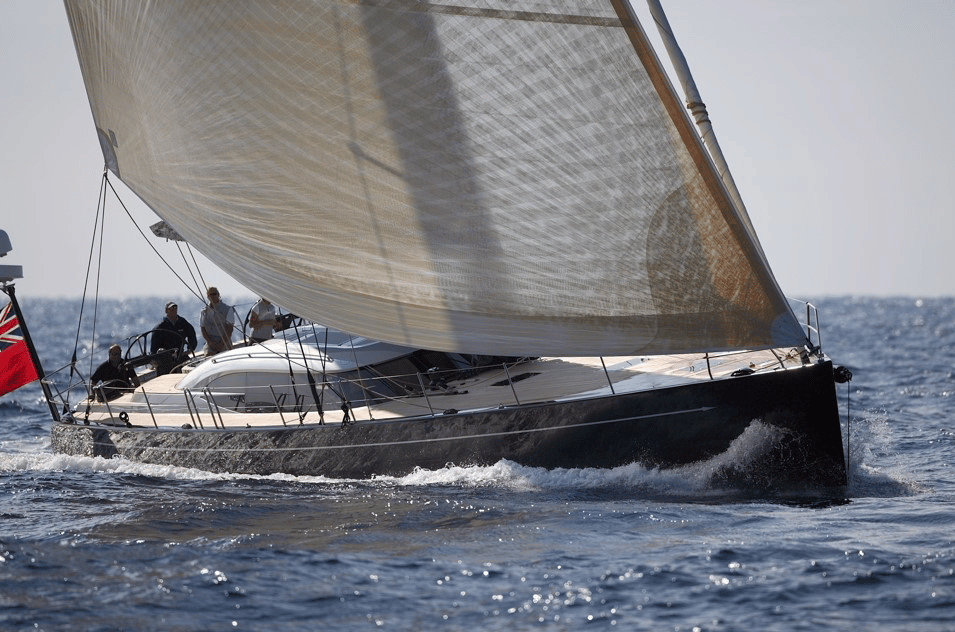
The Code 0 for cruising monohull sailboats is a full sail, shaped like an asymmetrical spinnaker, and furls easily on a top-down furling system. While the midgirth of the racing Code 0 is restricted to at least 75% of the foot length, the cruising version of the sail has no restrictions, giving the sailmaker a lot of leeway in design.
“You can make the midgirth anywhere from 55% to 75% of the foot length, allowing you to make them very deep and very flat,” says Quantum’s VP of Product Integration and sail designer Doug Stewart.
Many cruisers are intimidated by downwind sails, especially when sailing shorthanded or with inexperienced guests. The Code 0 is perfect for cruising boats because it is easily deployed on its furler and has a UV strip to protect it during a whole weekend or several days of use so that it doesn’t have to be taken down. “We find people will use this headsail more than any other on their boat,” says Stewart.
How and when to use the Code 0
The sail can be used at relatively tight angles in light air, and at very broad angles in heavier air. “It will take you through more wind angles than any other sail on the boat. Your kite is for downwind, your genoa is for upwind; the Code 0 is for all the angles in between,” Stewart says.
Rob Greven of the Netherlands-based Spirit Yachting first added a Code 0 to his sail inventory in 2009. “I was looking for a sail within my budget, easy in handling, good performance and reliable, and covering most of the wind angles.”
Now he says, he uses the sail on his Beneteau Oceanis 46 Spirit with clients and with his crew, on everything from short day trips to long-distance singlehanded racing—even the Rolex Fastnet race.
“We don’t carry a big genoa, so we use the Code 0 in light winds upwind—depending on the wind, up to around 40 degrees AWA. In the wind range of seven to eight knots, it’s possible to make seven to eight knots of boat speed. Even with our cruiser, it offers excellent performance.”
Greven says the versatility of the sail even extends to downwind running in stronger breeze between 18 to 24 knots at an angle of 160 to 170 degrees. “I’m able to sail light on the helm and with good control.”
He also carries a Quantum Vision Code 3 for downwind sailing with a full crew, but says the Code 0 is easier to use when sailing short- or singlehanded. “Since the sail is a little smaller and flatter than the V3, it’s a perfect sail for shorthanded sailing, even in stronger winds. It is better on the helm and easier to furl away,” says Greven.
Taking care of the sail
While the cruising Code 0 is designed with a protective UV cover, that cover is still very light. It will easily survive several days of use, but if you won’t be on the boat for a week or more, take the sail down, put it in its bag, and store it down below. Also, as with any sail furled on a torsional rope, if a storm blows through, there’s nothing to stop the sail from opening up. So if inclement weather is approaching, get the sail off the deck.
Greven would be the first to recommend the Code 0 to other cruisers, but says the sail sells itself.
“Last autumn, I sailed a singlehanded regatta, several days from one place to another. I almost only used the Code 0 in light winds and got a lot of positive response from other sailors.”
So while choosing a new sail for your inventory depends largely on what kind of sailing you want to optimize for, be sure to check out the Code 0. The versatility of the sail, combined with ease of use may very well prove to be the next best sail on your list.
This cruising tip has been brought to you by Quantum Sails.
- More: choosing sails , How To , sails , sails and rigging
- More How To

3 Clutch Sails For Peak Performance

It’s Time to Rethink Your Ditch Kit

8 Ways to Prevent Seasickness

How To De-Winterize Your Diesel Engine
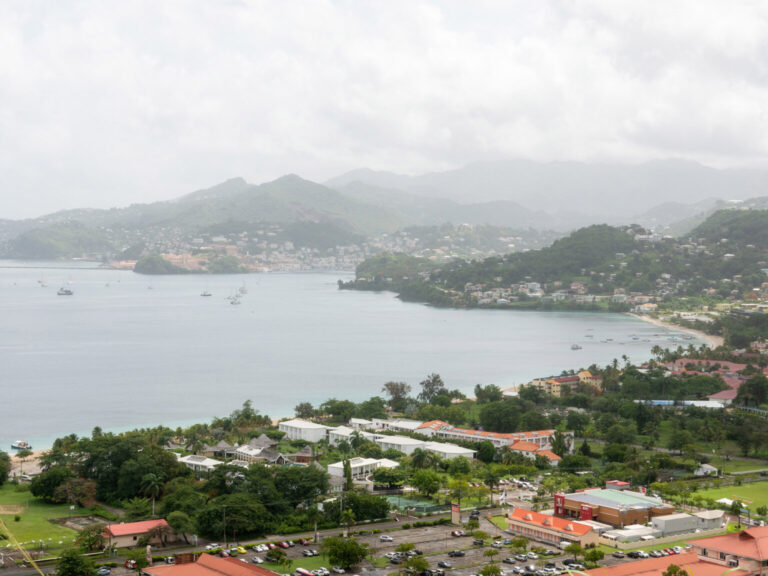
Grenadines Boat Hijacking Suspects Charged with Murder
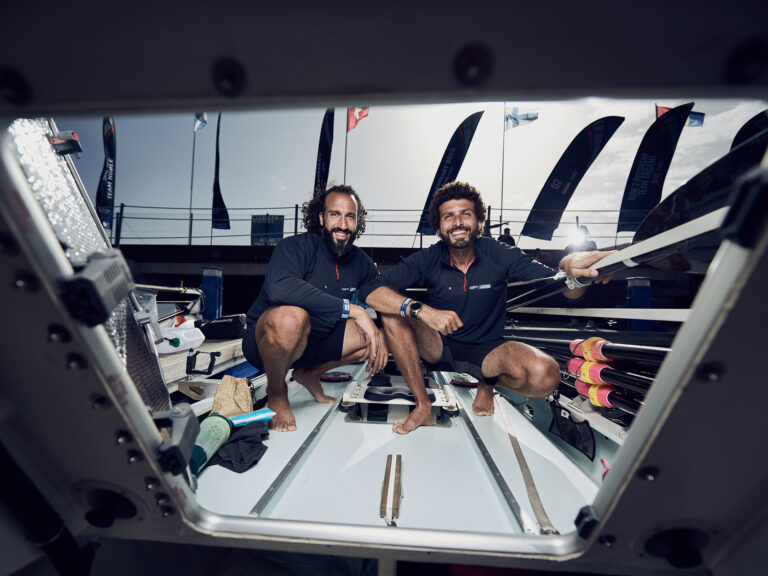
13 Hours in a Life Raft
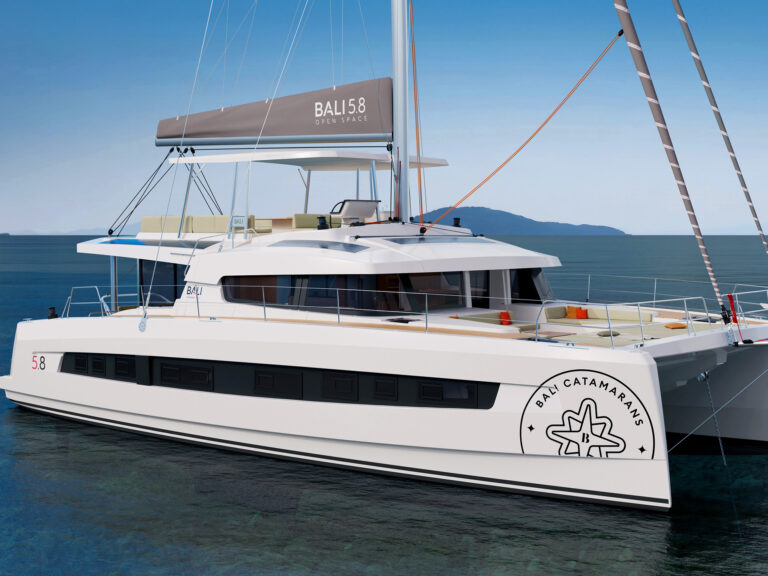
Meet the Bali 5.8
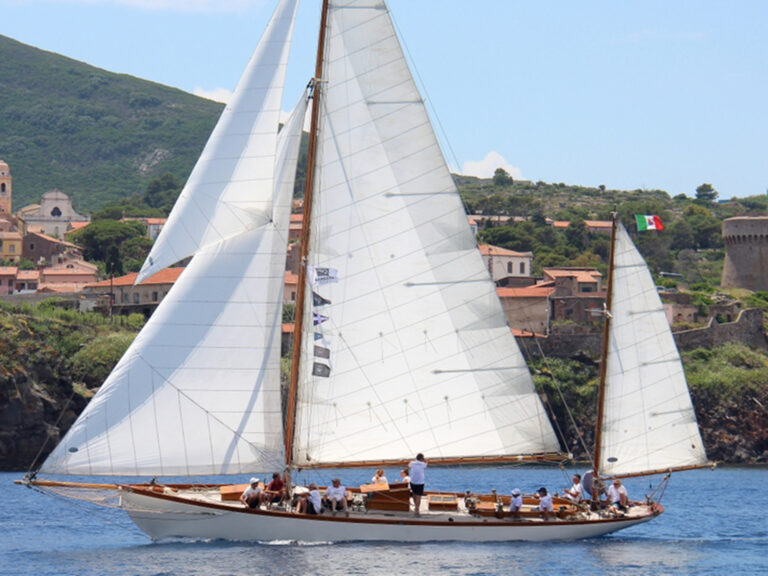
Celebrating a Classic
- Digital Edition
- Customer Service
- Privacy Policy
- Terms of Use
- Email Newsletters
- Cruising World
- Florida Travel + Life
- Sailing World
- Salt Water Sportsman
- Sport Fishing
- Wakeboarding
Home > Education & Expertise > Downwind and Light Wind Sails > Code Zero
Code Zero Sail
The Code Zero is a spinnaker-genoa hybrid. It’s designed to operate like a genoa but considered a spinnaker under racing rules (depending on its dimensions). This cruiser’s dream sail helps a boat’s performance in close reaching angles, especially in lighter winds, by generating much more speed than a slightly eased head sail. These sails also reach very well in moderate wind. A low stretch Vectran/Dyneema line or a torsion cable is normally used for the luff, and the sail is tensioned firmly to get a straight luff (a lot like a genoa).
A Code Zero has a mid girth of 75% of the foot length, so it measures as a spinnaker but has a much bigger area than a genoa. The optimal wind speed for this sail is 3 to 18 knots true wind speed and in lighter winds, you can carry this sail up to a 45-degree true wind angle. Typically they are designed to be flatter than a spinnaker and have a straight leech exit.
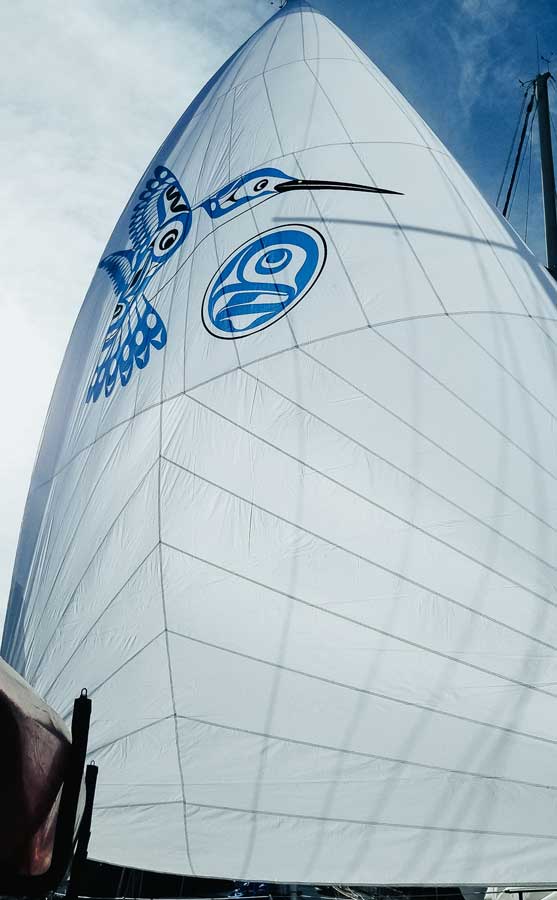
High-quality Code Zeros that’ll stand the test of time, no matter what you’re up to.
What makes a code zero.
The Code-Zero should be recognized as a spinnaker in the racing community, which means it must have a Mid Girth (MGM) no less than 75% of the Spinnaker Foot Length (SF).
The Code-Zero should have a solid luff, unlike drifters or Asymmetric Spinnakers which are free-run, attached only at the head, tack, and clew. The Code-Zero is run off of a dyneema or torsion line that keeps the luff straight and more rigid allowing it to point higher than an asymmetrical spinnaker but has a Leech Curve (as opposed to a hollow) increasing Sail Area and allowing the sail to power properly in low winds.
The torsion line is either built directly into the luff of the sail, or will use a system such as a zipper luff which allows the torsion line to be installed and removed easily. Often furling systems such as Harken Reflex, or Profurl SPINEX, come with a specialized torsion line.
Construction
Code Zeros can be made out of either Spinnaker Nylon, a lightweight Dacron, or a Code Zero lightweight laminate (such as Contender ZL series). As Code-Zeros are run at varying degrees and can function at a reach it is easy for sailors to push the limits of the intended speeds and angles causing damage to the sail. It’s important to know if you are going to need a sail that is more durable, lighter weight, or more performance driven – each of which has advantages and disadvantages. As a baseline, Precision Sail’s code zeros are designed with a zipper luff to allow a torsion line to be added/removed for storage and cleaning.
Heavier woven cloths, such as a 4oz Dacron, will provide durability and if you’re leaving the sail up for weeks at a time, Spinnaker Nylon is very lightweight 1.5 – 2oz, and will allow you to sail in very light winds. Finally, laminates are very performance orientated, with low stretch and very consistent sail shape; there’s also so much armamid in the Code-Zero laminate cloths that it’ll push your boat over before causing damage to the cloth, making it great for offshore sailing. A Code Zero Laminate will provide both lightweight performance in light air, and durability while crossing the pacific for an offshore catamaran cruiser with a displacement of 15,000 KG.
Catamaran Code-Zero
Many catamaran cruisers love to run a Code-Zero, just listen to Sailing Nahoa who rave about theirs! While there are many advantages, it’s important to note that you’re going to be restricted by the rigging for how the sail is going to be able to point. If the wide shrouds don’t allow you to sheet the sail in tight, you may not be able to hit 45° that many people expect out of the Code Zero.
Sailing Resources
Read more about Spinnakers and Code Zeros to help ensure you know what you want to know!
All About Spinnakers
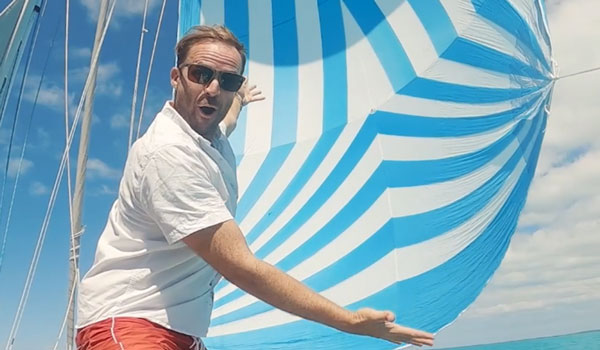
Sailing With a Spinnaker – Asymmetrical Basics (Gennakers and Light Air Sails)
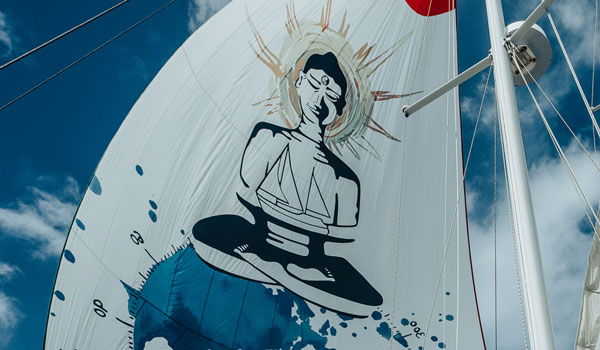
Sail Graphics, Colored Dacron and Color Customizations
Still confused.
Speak with a sail consultant and dial in your requirements for the perfect code zero.
" * " indicates required fields

- BUY A SAIL NOW
- WARRANTY POLICY
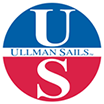
THE LANDING: BLOG
Cruising the code zero.
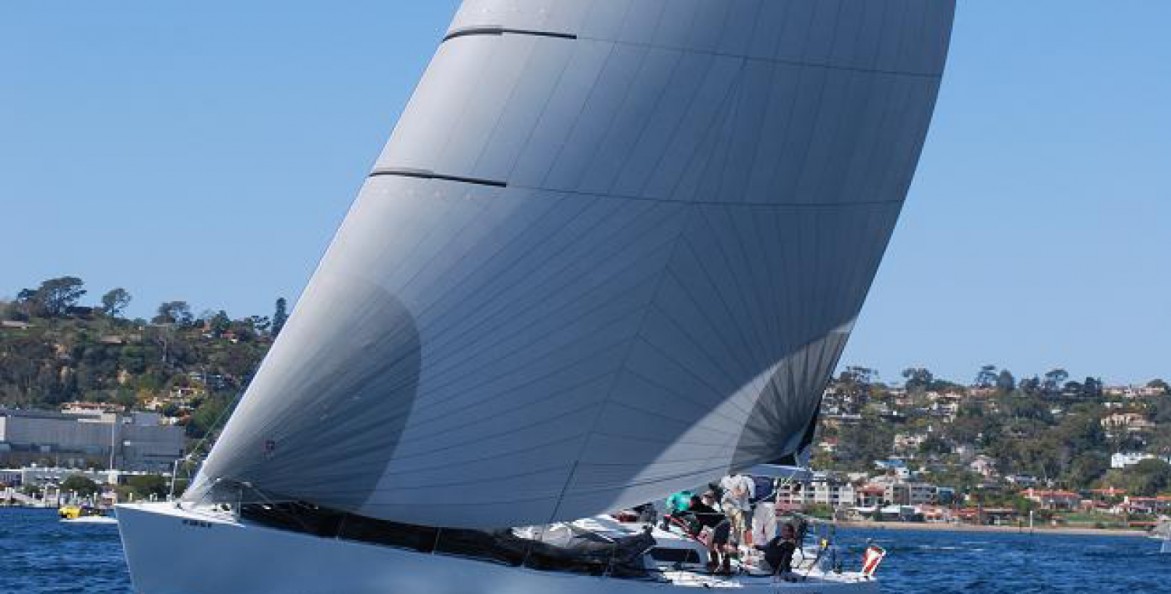
Chuck Skewes of Ullman Sails San Diego
By Chuck Skewes of Ullman Sails San Diego
Many sailors, especially cruisers, shy away from cruising the code zero, despite the sail’s versatility and ability to add significant increases in boat speed. In this article we remove some of the mystique around this specialty sail and explain how it can be used to enhance anyone’s sailing experience.
What exactly is a code zero?
Officially a code zero is a spinnaker for use in tight-reaching in light air – that’s it! The sail tends to be the smallest spinnaker in any sail inventory, whether racing or cruising. Racers have discovered that because of its size and applicable wind strength and angle ranges, the sail has benefits for racing performance while avoiding rating penalties. However, the practical applications of the sail apply just as much (if not more) to cruising boats.
The code zero was introduced in the 1997/98 Whitbread (now Volvo) Round the World Race. The event winners, Paul Cayard and the crew of ‘EF Language’, used a very small, tight-reaching spinnaker that could be used while the other teams could only use their genoas. It was very successful and since its introduction racers around the world have followed suit. The sail is considered a spinnaker instead of a genoa because of its dimensions. Sails built with a mid-girth length (the shortest distance between the leech mid-point and the luff) greater than or equal to 75% of the foot length qualify as spinnakers. The code zero meets this requirement. The mid-girth measurement is used in the rules to prevent teams from making 180% genoas and calling them spinnakers without the sail impacting their rating.
How does the sail cross-over for cruising?
Since cruising sails don’t have to meet any racing requirements we can actually make a much better sail for cruisers. The sail works like a very light, very large genoa. With a cruising code zero we can make the leech much straighter vertically, which allows us to make a straighter exit for the wind. This reduces heel and makes the sail more efficient and versatile. Essentially it provides more horsepower in light air, making sailing much more enjoyable. It is ideal for modern boats that have small non-overlapping headsails.
If someone occasionally races in beer-can races, can they use the cruising code zero to race?
A cruising code zero will rate as a genoa, so if it is larger than your largest genoa (and they always are!) you have to report it or not use it.
What wind ranges and wind angles do you use a cruising code zero in?
You can typically use a cruising code zero from 70° true wind angle (TWA) in very light air up to 110° TWA in 15+knts. Ultimately it depends on the righting moment of your boat and how comfortable you are with how much the sail may make your boat heel in significant breeze or at tighter angles. Most cruising code zeros are designed primarily for use in 85°-100°TWA.
How much extra performance should I expect to get out of a cruising code zero?
In light air the added speed generated from the sail is significant. It often more than doubles your sail area and can increase performance up to 30% as compared to a non-overlapping genoa.
If a code zero is for light wind, does that mean I’ll be motoring less? Do you use it for offshore cruising? Or would I use it in a harbor as well?
We use the code zero anytime the wind angle and wind strength are correct, whether we are in the harbor or on a long cruise. The light air performance will allow you to sail more and motor less, which, at least among our customers, we’ve found is typically the goal.
Are code zeros furling sails? Are they easy to launch? How many people do you need to do that?
Ullman Sails can design a code zero either as a furling sail or to launch from a sail bag. I recommend furling because you can set it up at the dock and easily roll and unroll the sail as the wind velocity and your angle change. Also, if you furl the sail, it can be used while single-handing. If you bag launch the sail you will want 3 or more crew on deck.
Have you had experience cruising with a code zero? Do you have a question we didn’t answer? What impact did it have on your sailing experience? Any advice you can offer to other sailors considering adding the sail to their inventory?
About Chuck Skewes A Seattle, Washington native, Chuck is an avid pro sailor and sailmaker. In just the last year Chuck has been part of the winning crews in the International Masters, Beneteau 36.7 West Coast Championships, and the Tjorn Runt in Sweden. He is also the loft manager at Ullman Sails San Diego and Ullman Sails Pacific Northwest. Chuck currently resides in San Diego and has been sailmaking since 1984.
BoatNews.com
Code 0, the light and powerful sail for sailing close to the wind
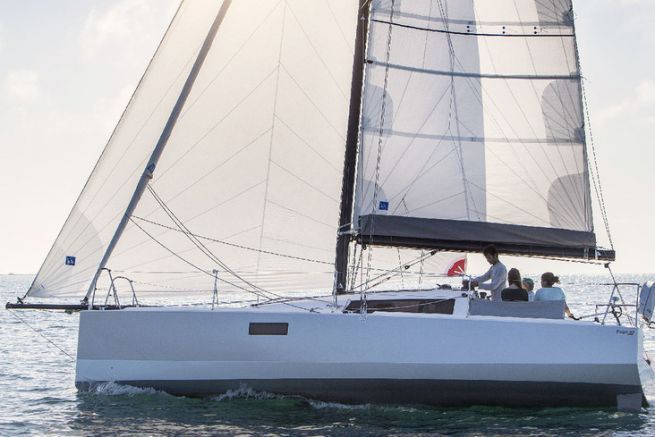
While summer and high pressure are installed on your navigation basin, you dream of a few extra knots to move your sailboat. Code Zero then becomes your best friend with its few extra square meters to get you moving.
Where does this Code 0? come from?
It seems that this terminology was coined during the 1998-99 Whitbread to define a flying canopy to be used upwind. There were already Codes 1, 2, 3... for sailing from full throttle to close hauled. The term Code 0 was coined to define a sail capable of sailing at tighter angles than any other flying sail . Over the last two decades, the evolution of materials and designs has made it possible to create very specialized sails for light airs.
A large, light, free edged genoa
The Code 0 is a kind of large, very light genoa that can be sent in the manner of an asymmetrical spinnaker or as a gennaker. This sail allows to tighten the wind in very light winds. With blocked materials such as laminated fibres and a fairly flat design you will almost be able to sail upwind. On the other hand, a slightly flexible fabric and a hollow shape will not allow you to sail upwind beyond 80°.
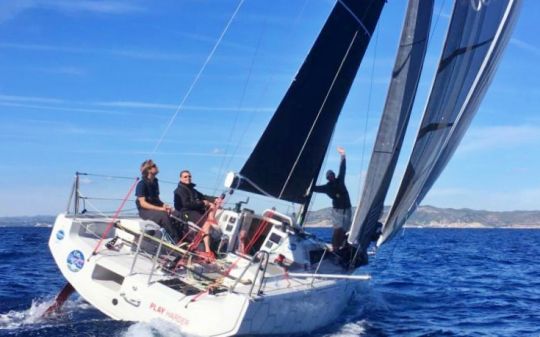
Who is the Code 0? for?
When the calm settles in, this sail is particularly useful on racing boats without a motor. However, it is gradually gaining ground on cruising yachts , which sometimes suffer from overweight and low overlapping headsails. Code 0 with furlers is becoming a relevant solution for increasing sail area in light airs.
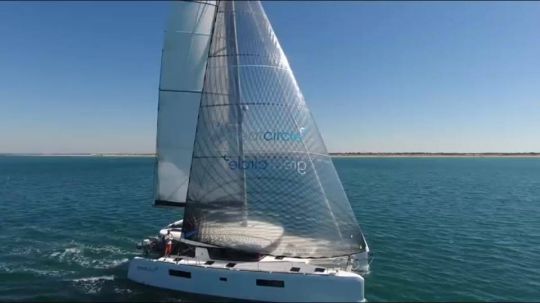
In regattas, can we use the 0? Code?
If you are a handicapped regatta sailor (IRC ORC...), you will be tempted to take such a sail on board. However, be careful with the measurements, otherwise your sail could be considered as a genoa , which would significantly increase the handicap of the boat . In IRC, the sail must be at least 75% of the edge at 50% of its height, in other words the shape is closer to an asymmetric spinnaker than to a genoa .
Can we turn around with a Code 0??
Tacking is not really the strong point of this sail , which will be more willing to gybe. However, if you wish to tack with Code 0, you will have to furl it in a large part before changing tack.
What are the criteria of qualité??
To be effective, the fabric should be "blocked" as much as possible with laminated materials. A nylon sail , such as a spinnaker , will only have a small range of use. In fact, when tacking to get closer to the wind, the leech will recede until it closes, which will then dump its wind into the mainsail ... all this is not very effective.
If you are using a furling system, the quality of the anti-twist luff rope is essential to roll the sail in all circumstances. The price of the rope is often directly related to its anti-twist properties. Some manufacturers such as All Purpose have developed Codes 0 that integrate the anti-torsion effect into their structure. This solution has already been validated on many racing boats and could soon win the pleasure boating market.
Can we keep the Code 0 in the mail and enroulé??
A Code 0 wrapped around its cable is a sail that will be quickly unfurled or stowed away. This equipment is not designed to stay in place full time. Although it is possible to keep it rigged for a few moments, it should be lowered as soon as the wind conditions cool down.
- AROUND THE SAILING WORLD
- BOAT OF THE YEAR
- Email Newsletters
- Best Marine Electronics & Technology
- America’s Cup
- St. Petersburg
- Caribbean Championship
- Boating Safety

Code Zero Sails Help Build a Better Offshore Inventory
- By Jeff Thorpe and Rob MacMillan
- Updated: May 8, 2012
It’s one of those perfect offshore nights: solid wind, easy swell, clear sky, and sheets eased on a headsail reach. The on-watch crew is active on the sail trim and you’re making gains on your competitor to leeward. Fast-forward three hours into the watch. The navigator sticks his head up the companionway and asks, “What happened to the boat that was next to us?”
“Well, the breeze continued to build and went aft a bit,” you respond. “They were able to continue sailing their course, but we were struggling with speed and had to head up to maintain pace with this headsail.”
“Why is he able to sail that angle but we cannot,” counters the navigator. “We’ve been working him all night.”
“We think they did a sail change, maybe a kite,” is your answer. “With the increased breeze, we can’t carry our spinnaker at that angle. It’s too risky.”
“Damn. I wish we’d brought a reaching kite instead of only runners,” the navigator sullenly mumbles.
If a similar conversation has ever occurred on your boat, you’re not alone. Building the ideal sail inventory for a particular distance race is one of the most important aspects of your race preparation. The best way to ensure you have the right sail for the right conditions is to recognize any gaps in your inventory, gaps that, once filled, allow you to sail the best angle possible at all times.
The first step is to take a good look at your existing sail inventory , and then define the designed true windspeed and true-wind angles of these sails. Divide your inventory into three parts: upwind, downwind, and reaching. You probably have one main, three or four headsails that cover you in light, medium, and heavy conditions, and likewise for your downwind sails. It’s the reaching sails that are more difficult to fit into the inventory. You’ve got jib tops, reachers, Code Zero sails, and staysails as options, and it’s here in the reaching sails where you’ll most likely have the biggest gaps.
To give some insight into building a more versatile inventory, let’s explore a few commonly asked questions.

Courtesy of Quantum Sail Design
I need to improve my reaching inventory, but I am confused by the terminology and coding of some of the sails. Most sailmakers refer to odd numbered sails (A1, A3, A5) as reaching spinnakers and even numbered sails (A2, A4, A6) as downwind-orientated sails. Code Zero sails are most effective between 80 to 125 degrees true-wind angle, in windspeeds of 5 to 18 knots. However, it’s important to remember that the Code Zero is measured as a spinnaker. You can push these sails to slightly tighter angles in light winds, but be prepared for leech flapping. An A7 is a very small sail for very big breeze, 28 knots or more. It’s typically a fractional sail. A jib top is a high-clewed headsail used for tight beam reaching.
My boat came with a typical upwind sail inventory, but my crew insists we could use a Code Zero, especially if the race turns into an upwind drifter; is this true? A common misconception is that a Code Zero can be used upwind in place of a genoa. In perfect conditions—light-wind, smooth water—a true-wind angle of 70 to 80 degrees is about as close to the wind as you’re going to get from a Code Zero. On a masthead-rigged boat with 155-percent overlapping genoas, the gap that exists between a large jib top and an A5 reaching spinnaker is not significant enough to warrant a Code Zero. On a fractional-rig boat with non-overlapping jibs, however, a Code Zero is a necessary sail because of the significant gap between the smaller non-overlapping jib and the A5 reaching spinnaker.
For a long downwind race where I may need the same sail for extended periods, how do I make sure I have redundancy in the sweet spot of my asymmetric inventory? For Transpac, and many other coastal and offshore races, the A2 spinnaker is your workhorse. But the A2 you use for inshore buoy races to sail at low angles may not be the best sail for offshore racing, when surfing waves and dealing with shorthanded sail changes. For the Reichel/Pugh 45 Criminal Mischief , we developed an A2.5, which is essentially the same size as an A2, but is much more durable. It has more reinforcement, a flatter luff, a twisted leech profile, and an oversized tack patch. This kite bridges that important gap between the A2 for flatter seas and lower angles and the smaller A4 for higher winds. This allows us to drive the boat harder in those crossover conditions, when we need to be able to put the bow up to track waves and not risk a wipeout due to the size and fullness of the inshore A2. This also allows us to sail with two A2s (A2 & A2.5) that are each efficient in a given wind range. If we break one, we still have one with which to finish the race.
I race a Beneteau 44.7 in local PHRF events. The boat has a racing main, a 145-percent genoa, a 100-percent jib, and an all-purpose spinnaker. I’m planning to do the Bermuda Race but have a limited budget. What essential sails would you recommend I add to my inventory? A 145-percent jib top, heavy genoa staysail, and reaching spinnaker would be the primary sails to focus on. There can be a fair bit of reaching in the Bermuda Race and the jib top is a potent weapon for true-wind angles between 50 to 110 degrees. The jib top offers considerably better performance in this range because the design is orientated to reaching. It also makes the boat easier to drive and more balanced, especially when paired with a genoa staysail. The genoa staysail is an extremely versatile sail that can be flown inside of headsails and spinnakers; in a seaway it can help settle the boat into balance. You should also have a spinnaker for tighter reaching angles of 100 to 145 degrees, and for better control when sailing downwind in high wind speeds. This sail will be significantly flatter than your AP spinnaker and should be made of 1.5-ounce cloth.
I’m racing my Baltic 37 in the Pacific Cup and I have three full-size symmetric kites. My boat has problems tight reaching, and we have control problems downwind in anything above 18 knots. Is there a sail that can help alleviate these problems? Because your boat is a heavier IOR-influenced design with a masthead rig and overlapping genoas, I would eliminate the symmetric spinnakers. Asymmetric spinnakers are more versatile and user-friendly offshore, especially in surfing conditions when the acceleration brings the apparent wind forward. I would first add an A3 or A5 reacher, which can also serve as a heavy-air running kite to 150 degrees, and a light-air reaching kite, which you can carry as high as 90 degrees true-wind angle. Its primary intended range is the transition zone between your jib top and your full-sized spinnakers.
An A2 or A4 runner would have the same sail area as your biggest symmetric spinnaker, but provide a better option to bridge the gap between 130 degrees and 160 degrees true-wind angle. This would also provide better control running downwind in the 16- to 24-knot range with waves. Above this range you’re back to the A5, with the reduced girths and smaller sail area to allow you to sail a bit higher true-wind angle to maintain a user-friendly groove to drive the boat around in the waves.
- More: Boatspeed , Offshore Racing , Sailing How To , Sails
- More How To

The Wisdom of Augie Diaz

Why S-Turns, Roll Jibes and Roll Tacks Are Fast

The Path to Consistent Boatspeed

Headsail Trim Tips For Floating Leads

America’s Offshore Couple

Jobson All-Star Juniors 2024: The Fast Generation
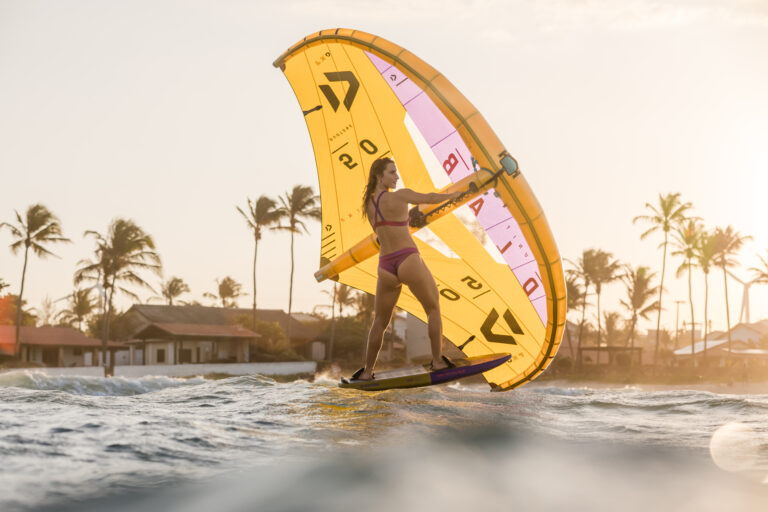
Wingfoiling Gear: A Beginner’s Guide
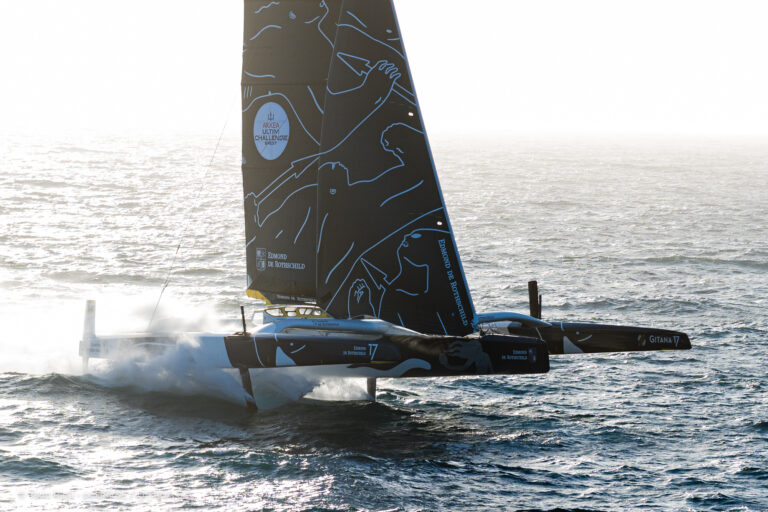
Caudrelier Wins Round-the-World Solo Sprint

- Digital Edition
- Customer Service
- Privacy Policy
- Terms of Use
- Cruising World
- Florida Travel + Life
- Sailing World
- Salt Water Sportsman
- Sport Fishing
- Wakeboarding

Changing our catamaran Code 0 furler to a safer discontinuous system
Updated: Mar 1
When we purchased our new Leopard 45 catamaran we selected the OEM Code 0 sail and furler from the Robertson & Caine factory option list. Since then we streamlined and improved the entire system, making it more functional, safer and able to be single-handed.
The value of this simple conversion is that you can pull the sail in under any reasonable conditions you may have it deployed at or could unexpectedly find yourself in, without fear of it being stuck out.
The original furling setup
The original furler was the Profurl NEX continuous furler. To deploy the sail and retrieve it, one person had to be in the helm controlling the port and starboard sheet lines. A second person had to sit at the front of the boat in the waves and weather, and manually furl the sail in and out using their own arm strength then maintain pressure on the continuous furling line while trying to cleat it off at the crossbeam.

In our opinion this is an extremely poor system if you are overcome by unforeseen gusting wind or are stuck in a squall. My limit to bring it in as an athletically fit young female was about 12-13 knots apparent wind. From around 13-15 knots apparent wind Tynan needed to bring it in and the one time it gusted to 16-17 knots apparent wind, it took two of us pulling in unison to get it in.
Having the system is absurd when there's a better option available that uses a cheaper drum.
The new furling system
After some investigation we decided to move to a discontinuous furling system like we had on the genoa.
Facnor discontinuous flying furler system
The furler we chose was the Facnor FXT +4500 drum furler for flying sails. It's made in France by Facnor, who along with Profurl are owned by Wichard. We weren't aware of this until we visited Wichard at the Annapolis Boat Show.
When we ordered the furler this is what it came with.
The anodised aluminium drum
A swivel which was CNC machines from a solid block of anodised aluminium and had a protective neoprene cover.
Snapshackle to attach the bottom of the drum
Shackle to attach the halyard to the top of the swivel

The larger version of the FXT +4500 is the Facnor FXT +7000 drum furler. It's worth considering whether upgrading would be beneficial to you, as the drum diameter of the FXT +4500 is almost at the limit with the width of the Leopard Code 0 sail. If we were doing it again, we'd lean towards getting the +7000 over the +4500.
What we needed to install it
Once we had the furler we determined at what else we'd need to install the system. Here's a list of what we purchased.
FURLING ROPE
38 meters of 8mm high strength polyester for the furling line. After assessing what was available in Gibraltar we purchas ed Marlow Doublebraid .
Bulls-eye fairleads are needed to guide the rope up the deck. We used 6x 10mm Spinlock Low Profile Control Line Guides ( Part : BE10/TF) and spaced them relatively evenly up the deck based on the curve of the hull. We would have liked the Lewmar bull-eyes to match the ones installed by Robertson & Caine for the genoa lines, but they weren't available at the time.
FRICTION RINGS
Two low friction rings to guide the rope onto the furler. We used 10mm Harken Lead Rings (Part: 3270). Both of the rings are spliced onto some rope offcuts we had around the boat that were sized to help guide the rope from the first pulley onto the drum so the rope wound around the drum evenly.
A footblock to angle the line at the front of the port hull so it smoothly transitions from the furler to the fairleads. We purchased a Seldon footblock as there weren't enough of the Lewmar HTX 60 footblocks that match the rest of the boat at the chandlery, and Lewmar were overhauling their computer system at the time so weren't processing orders.
A block to angle the line from the deck up to the roof. We already had a spare Lewmar HTX 72 single block with becket aboard ( Part : 29197204) so used that.
Footblocks to stack onto the existing rooftop blocks to guide the line into the helm. On the Leopard 45 there are three footblocks to stack on top of; 2x Lemar HTX 72 footblocks (Part: 29197261) and 1x Lewmar HTX 60 footblock (Part: 29196061) .
A clutch for the furling line to go through in the helm. We purchased a Spinlock XCS Single Clutch (Part: XCS0814) as we've transitioned away from the Lewmar clutches our Leopard 45 came with from factory.
CONSUMABLES
Fixings and sealant to install the additional blocks and bulls-eyes including UV rated sealant to bed the footblocks and stainless steel bolts.
How our Code 0 discontinuous furler is set up
Here's a rough diagram of how we ran the discontinuous Code 0 furler line back to the helm on our 2021 Leopard 45.

The line runs from the drum, through two frictionless rings then through a footblock on the port hull. The position of the dolphin seat and angle from the furler to the footblock were the key factors in determining the installation position.

From the first footblock the line goes up the deck through a series of fairleads, then goes through a pully that angles the rope up to the roof, the same way the Code 0 control line is set up.

From there it goes across the roof on footblocks that are stacked on the Code 0 Port control line blocks.

The line ends at the helm in a Spinlock clutch.

Changing the furler
Once we'd installed the hardware for the lines we needed to figure out how many pre-turns needed to be on the drum to bring the sail in and out smoothly.
We waited until there was 0 knots of wind in the Gibraltar marina then spent time taking the sail in and out, making adjustments to the number of turns until it was right. Once we had it, we made some marks on the rope so we'd know for future reference.
How many pre-turns you need will depend on your sail and line.
Review of the Facnor FXT +4500
We had the discontinuous Code 0 furler system installed before crossing the Atlantic Ocean and it made a huge difference.
We use our Code 0 a lot more now because it doesn't need two people to bring it in and out. This is especially helpful when there is one person on watch as previously we'd avoid using the sail so we didn't have to wake sleeping crew.
Since the sail can now be closed using a winch rather than human strength we have no issues bringing it in when the wind gets stronger. This is safer and makes using the Code 0 a more enjoyable experience.
In high winds there is no chance of the furler drum slipping due to the design of the drum and the furler rope being locked in a clutch. With the continuous furler this can happen if the friction brake is overcome, or something inside the furler breaks.
Something else we did to our Code 0 furling system was add two clutches for the sheet lines. When we purchased the factory Code 0 option it didn't come with any, so we sourced two of the Spinlock XCS clutches and installed them inline between the last footblock and the winch.
If you're considering making the change from a continuous Code 0 furling system to a discontinuous system we'd recommend doing it. In our opinion it is far superior to the continuous system originally installed on our boat, and if we had our time again we would install a discontinuous flying sail furling system from the start.
The way we have installed ours suits our boat and needs, but as always you need to take the time to think about the best layout for your boat. We're happy with the Facnor furler, Spinlock clutches and blocks, but if we did it again we'd consider upgrading the furler to the larger size and would change the bulls-eye fairleads to the Lewmar version.
- Product Reviews
Recent Posts
Safely boosting marine engine HP with STEINBAUER PowerModules
DJI Osmo Action 4 Review: Is it better than a GoPro?
How we check and adjust our Yanmar valve clearances
Visiting Trinidad's biggest food market
- 22 hours ago

30 Meals for passage that don't need refrigeration!

How to make money as a freelancer while living on a boat

Tap testing a yacht to find fiberglass discrepancies

- andrewmorrisey
- Apr 4, 2021
What type of Asymmetrical Spinnaker? Code Zero vs Code D.
Decisions – Decisions --- Code Zero or Code D?
What will be a better down-wind sail for our new Elba45 for our initial adventure coming down the coast of France-Spain-Portugal on the Atlantic side and then cruising in Mediterranean Sea next summer (2022)? What would be a better Asymmetrical Spinnaker, the Code Zero or Code D?
Both kites are on a roller furler which makes it much easier to douse, especially when a squall comes out of no-where. I do not think we will need a full Symmetrical Spinnaker until we do the Atlantic crossing. Looking forward to your comments and opinions on this one.
The Code Zero
The Code Zero is a cross between a genoa and an asymmetrical spinnaker that is used for sailing close to the wind in light air. Code Zero was initially an attempt to circumvent a rating rule by making a large genoa for close reaching on boats that were measured with non-overlapping genoas. The Code Zero got around the rule by measuring in as a very narrow-flat spinnaker with shape similar to a reaching genoa. Cruising sailors have a lot more options on the size and shape of a "code" sail.
The code zero is very flat and is designed for close reaching. It has a nearly straight luff, a mid girth about 60-65% of the sail's foot length. This sail is closer in shape to a traditional drifter than a spinnaker.

Cruising Code Zero (left) and a Cruising Spinnaker (right). The Code Zero is a much flatter "triangular" shaped sail that is designed for close reaching. The Cruising Spinnaker is bigger and rounder and designed for broad reaching.
The Code zero runs wind angles from 50-110 degrees.
The Code D is a cruising spinnaker with a nearly straight luff that furls from the bottom up, just like a genoa. ... Most Sailmakers has succeeded in developing an asymmetrical spinnaker that performs well from 80-degrees apparent wind angle to nearly dead downwind. With a regular, continuous line furler, it’s easier to use than a Stasher system and less expensive than top-down furlers. The Code D gets its name because its shape, a straight luff and round leech, makes it look like the letter "D."
It’s polar range is wide and can sail from 60 degrees to 140 degrees. If you have a spinnaker pole on the down-wind clew it can be pushed out to accommodate full dead down-wind angles of 180 degrees.

The comparison
-Upwind to apparent wind of 50 degrees
-Reaching to apparent wind of 110
-Apparent wind speed: 1-16 knots
-Approximately 60% of the sail area of a full-size spinnaker and about twice the size of a non-overlapping genoa.
-Upwind to apparent wind of 60 degrees
-Reaching to apparent wind of 140 degrees
-Apparent wind speeds: 1-16 knots
- Approximately 70% of the sail area of a full-size symmetrical spinnaker

After reviewing all the details we have decided to order a Code D and will let you know next year what we think. Note that on our J30 in Canada we have a APR 70 Asymmetrical Spinnaker in addition to a full Symmetrical spinnaker.

Recent Posts
It is now official - our new boat has been registered and licensed with the name 45North.
A taste of the cruising life in our own back yard
What to do when you have a floating home in the Mediterranean Sea? sv Makin Waves to-do list.

- CLASSIFIEDS
- NEWSLETTERS
- SUBMIT NEWS
Choosing a Code 0 or Gennaker Furler
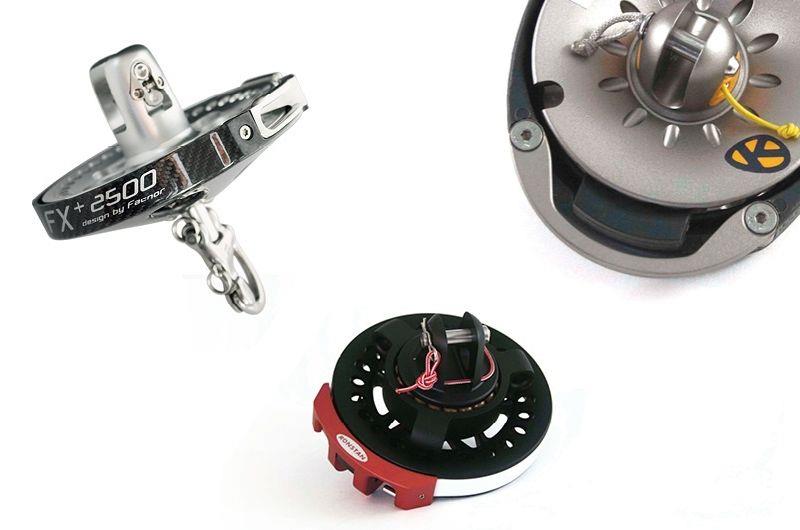
- If you have a multihull this will almost always push you into the next category up due to the increased stability and therefore, loads.
- Due to the significantly smaller sail areas relative to code zeros and gennakers, on the same boat, Staysail furlers can often be a size range down.
- If so, the thimble width on your furling cable is critical to the specification of the unit.
- Various jaw widths and pin sizes are available across the different unit manufacturers, but this will limit your choice to a few suitable units
- Please do not forget jaw depth i.e. the distance from the pin to the back of the jaw. It is by no means guaranteed that this distance is enough to accommodate your thimble/cable.
- Despite the obvious choice of whether to go for a dedicated top-down furling unit, Top-down furling has other consequences on unit size
- Loads are much smaller for top-down furling and therefore you should be able to go down a size
- However, cable sizes are always bigger in diameter relative to bottom-up cables. This drives bigger thimble widths which often forces you to buy a larger furing unit than is required on pure SWL requirements.
- However, one good example is KZ Race Furlers from New Zealand where every unit is available with a range of jaw sizes - to allow a smaller SWL unit with a larger than normal jaw width to accommodate the larger thimble.
- But this flexibility does come at a premium price.
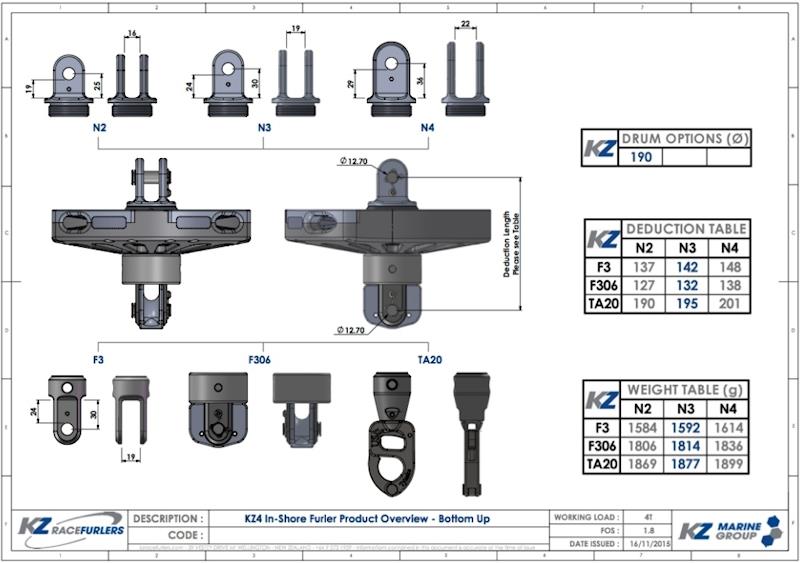
- If you have narrowed your selection down to a few possible options, drum diameter is another important consideration
- A bigger drum provides more torque / power which will be useful for a heavier, larger code zero
- A smaller drum delivers more speed - an essential component to successful top-down furling (N.B. the smaller the drum the more power and line speed you need to be able to generate from either your winches or your arms - depending on boat size!)
- Furling drum locks / ratchets are becoming increasingly popular, but they are by no means standard across the manufacturers.
- Code zero's and gennakers are always either fully furled or fully unfurled and historically people have been content to tie or cleat off the furling line when the sail is furled
- However, increasingly customers like the security of using a lock to prevent the accidental unfurl.
- Identify a suitable SWL range based on your boat size
- If you have a multihull - go one category up
- Is your displacement or sail particularly large/small which may influence the SWL above or below these average recommendations?
- If you have an existing cable - consider jaw width/depth and pin diameters
- If it's for top-down, you need to minimise SWL but consider all the other important criteria for effective furling and be prepared to accept the larger unit size
- Check your options on drum size and consider lock or no lock
- Finally choose the lightest one
Related Articles
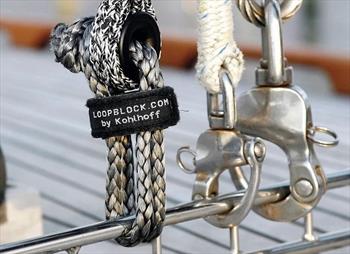

Catamaran Screecher / Code 0
Code 0 / screecher, code 0 specifications, code 0/screecher design process.
Catamaran type Code 0's are called Screechers and specially made for catamarans. Screechers are designed a little more flat than a code 0, due to the design of the Catamaran and their sails. Fareast sails Screechers are fully customized with your sailing style in mind. Screechers are radial cut for optimal performance. Each sail is assembled in an organized data sheet for you. You will then be able to review the chart and make changes. Once you approve the chart, we draw each sail and we provide you CAD drawing of your sail(s). You can again review and make changes. Once you approve the drawings, we cut your sail. The process is quite easy.
Screecher Design
Screechers are a hybrid between a spinnaker and genoa, tending more toward the headsail, it generates headsail-type. Screechers are made with premium sail cloth from Challenge, Contender, and dimension-polyant sail cloth for both inshore and/or offshore applications. Our Screechers Designs provide an excellent all-around performance sail. Screechers designs consist of both nylon and laminate cloths.
Depending upon the fabric and boat design, the Screechers can be carried from as close as 45 degrees apparent wind angle (AWA), to as wide as 75 to 110 degrees. Mid girth measurement 60-65% of the foot
Screechers can be also Optimized to 60 - 140 degrees apparent wind angle (AWA), Approximately 70-75% of the sail area of a full-size spinnaker. Mid girth measurement 75-85% of foot length.
- Our Screechers are CAD drawn and presented to you before production
- Screechers come with 4 color option standard (certain cloths have limited color choice)
- Every Code are designed with 3 step zig stitched (triple stitching) standard
- Options Include: Piston Hanks, Numbers, Torque Rope, and Colored logo designs
- Blue water finish for ocean passages
- Sails are full radial Design Standard
- Screechers can be designed for top down furler with Vectran or Polyester Torque Ropes built into the luff
Code 0 Cloth
- Body Challenge Sail Cloth: Fibermax (.75 oz and 1.5oz) , Elite Racing Nylon
- Contender Sail Cloth: Maxlite (1.5oz), Nylite (.90oz), Superlite, Superkote, Stormlite, Maxikot
- Dimension-Polyant – CZ Sliver, CZ GP, CZ White
Get In Touch
Request a quote for your sails or simply get in touch with the Far East Sails team.
- Go to content
- Go to footer
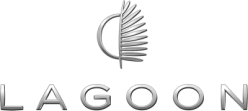
- Rental operators
- Service centers
- Pre-owned Lagoon catamarans
- The Lagoon Premium Program
- Finance your Lagoon
- Club Lagoon
choose your language

AN UNPRECEDENTED CATAMARAN
Length overall
Upwind sail area
Number of berths
Request a brochure
Boat of the Year 2017 - Cruising World
Best Boats 2017 - Multihull
Sailing Today Awards 2016 - Multihull
Asia Boating Award 2016 - Best Multihull Sailing Yacht

THE PERFECT BLEND
The Lagoon 42 affirms a distinctive style and personality. Performance combines with strength in a unique design and thoughtful construction. A generous catamaran, the Lagoon 42 is always at ease, while cruising and at anchor.
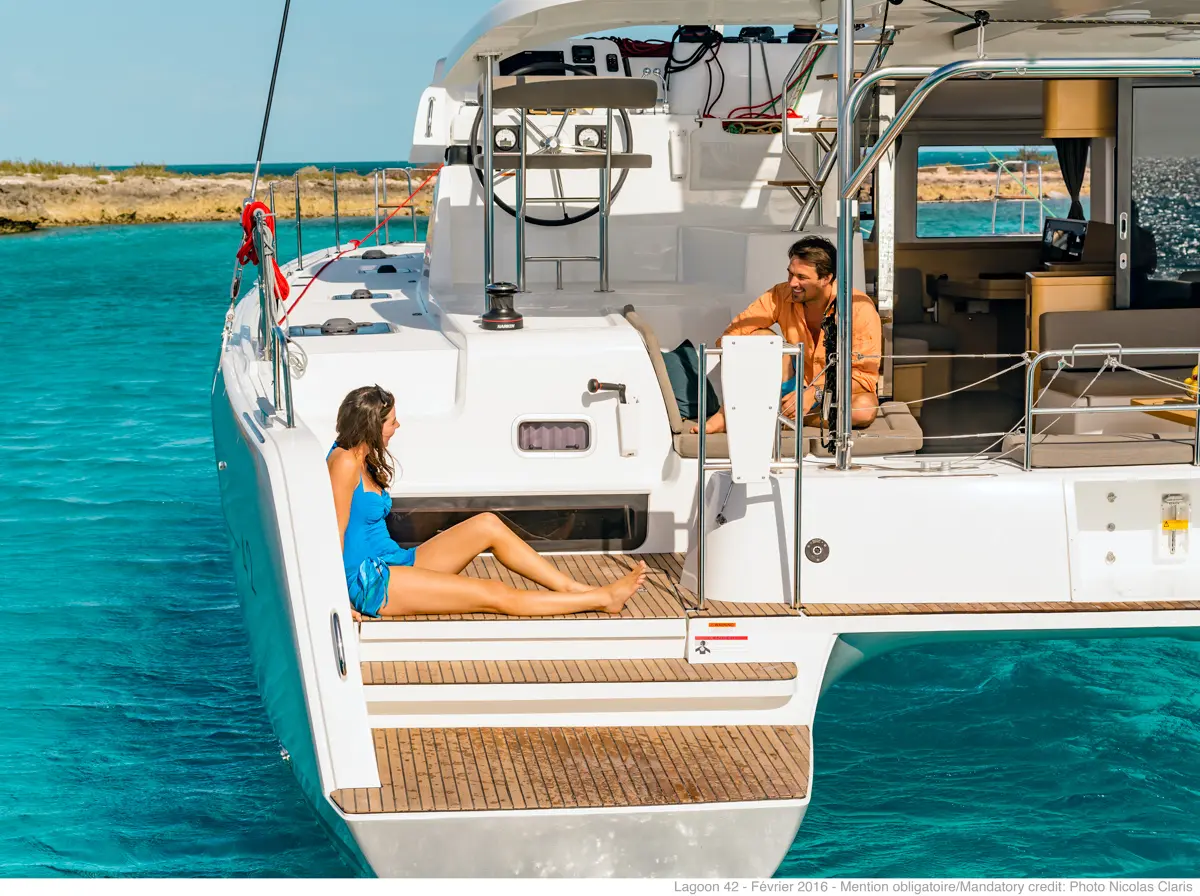
VERSATILITY AND EASE OF HANDLING
Under sail, the beautiful reaches of the Lagoon 42 demonstrate balance and high performance. They are the result of expert craftsmanship and organic design by VPLP Design and Patrick le Quément. Her unique style combines dynamic energy with smooth handling.

THE FREEDOM OF SPACE
Just two steps separate the swim platform and the cockpit. The ergonomic design guarantees space and fluid movement on board. Sheltered and well ventilated, the cockpit is an open invitation to relax.

ELEGANCE AND MODERNITY
Echoing her exterior lines, the interior design, by Nauta Design, combines elegance and softness with contemporary woodwork. Light, comfort, privacy… the style of the Lagoon 42 offers a wealth of benefits to share.
VIRTUAL VISIT OF THE LAGOON 42
Enter the cockpit of the Lagoon 42 from her aft transoms and imagine yourself at sea…
Your tour begins here.
Interested in this catamaran?
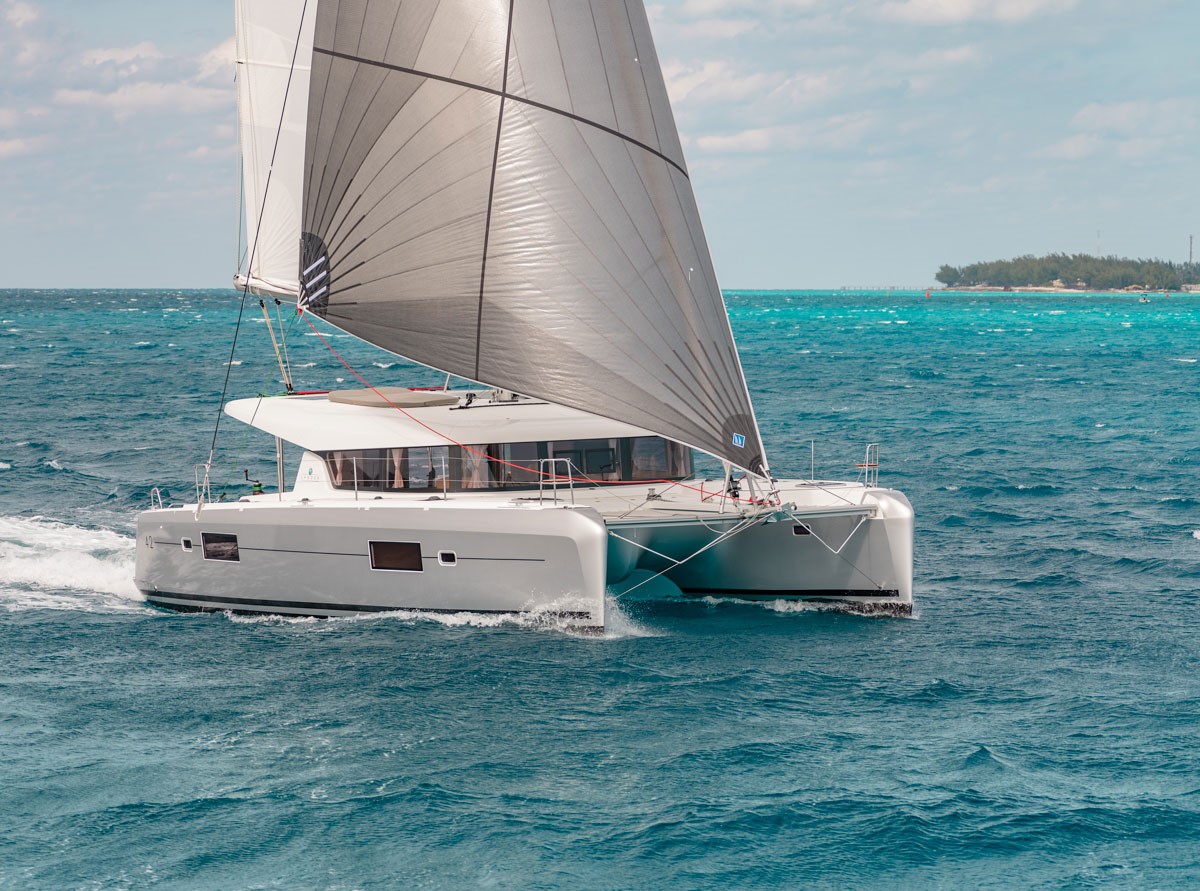
Specifications
- Overall length 12,80m / 42'
- Waterline length 12,50 m / 41’
- Beam 7,70m / 25'3''
- Water draft 1,25m / 4'1''
- Air draft 20,65m / 67'9''
- Light displacement (EEC) 12,1 t / 26 681 Lbs
- Upwind sail area 90 m² / 968 sq.ft
- Square top mainsail (opt.) 59m² / 635 sq.ft
- Self-tacking jib 35m² / 377 sq.ft
- Code 0 (opt.) 68m² / 732 sq.ft
- Motorisation - standard 2 x 57 CV / HP
- Water tank capacity 300 l / 79 US gal
- Fuel tank capacity 600 l / 159 US gal
- No. of berths 6 to 12
- CE approval A : 12 / B : 14 / C : 20 / D : 30
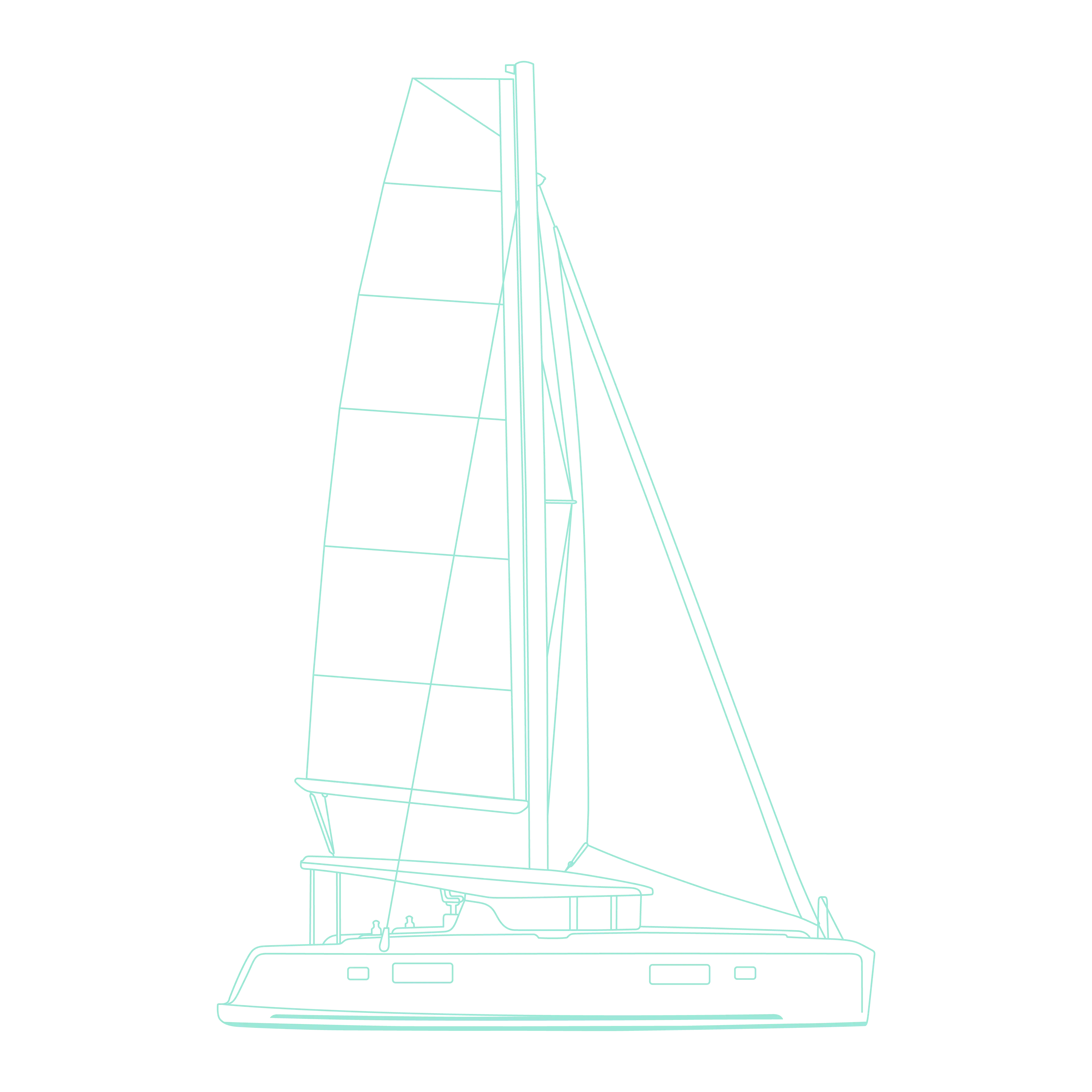
PRESS releases

The NuGet.org repository signing certificate will be updated as soon as April 8th, 2024

Erick Yondon
March 13th, 2024 0 0
Action required: If you validate that packages are repository signed by NuGet.org using a NuGet client policy , NuGet.exe verify command, or the dotnet nuget verify command, please follow these steps by April 8th, 2024 to avoid potential disruptions when installing new NuGet.org packages. If you are unsure, we have outlined steps to check if you will be impacted .
Since 2018, NuGet.org has used an X.509 certificate to sign its NuGet packages. The certificate was last renewed on March 15, 2021, and is set to expire on May 15, 2024. As early as April 8th, a new certificate will replace it as the new NuGet.org repository signing certificate for NuGet packages. Existing packages already signed with the older certificate will retain their existing signature, but the older certificate will soon no longer be used to sign packages.
You may recall a similar blog post a few months ago from when we updated the Microsoft author signing certificate . The action required to accept the new NuGet.org repository signing certificate is very similar, but does have key differences outlined in the the instructions below.
Current certificate SHA-256 fingerprint: 5A2901D6ADA3D18260B9C6DFE2133C95D74B9EEF6AE0E5DC334C8454D1477DF4
New certificate SHA-256 fingerprint: 1F4B311D9ACC115C8DC8018B5A49E00FCE6DA8E2855F9F014CA6F34570BC482D
Who will be impacted?
1. Customers who are using a NuGet client policy to enforce an allow list of trusted signers that includes NuGet.org.
To tell if you have a NuGet client policy configured, check for the following elements in your nuget.config . Keep in mind that you can have nuget.config files in multiple locations with different scopes.
2. Customers who use NuGet.exe verify (Windows only) to verify that signed packages are repository signed by NuGet.org.
This will look like the following in your code:
3. Customers who use dotnet nuget verify to verify that signed packages are repository signed by NuGet.org.
If none of the above scenarios apply to you, then you should be unaffected by the certificate update! NuGet.org packages signed with the new certificate should install in the same way as packages signed with the old certificate.
Allow the new NuGet.org certificate
Client policy.
If you are using a NuGet client policy to enforce an allow list of trusted signers, then you will need to add the new NuGet.org certificate to your allow list to avoid disruptions when installing NuGet.org packages signed with the new certificate. You should keep the older NuGet.org certificate as well to continue installing NuGet.org packages signed with the older certificate. If you try to install one of these newer NuGet.org packages without updating your trusted signers, you’ll get an NU3034 error and the package will fail to install.
You can explicitly trust the new NuGet.org repository signing certificate by adding to your nuget.config file the new certificate alongside any older certificates you may already have:
NuGet.exe verify
If you use NuGet.exe verify to verify that a signed package is repository signed by NuGet.org, you’ll need to update the command to handle either certificate like so:
dotnet nuget verify
Similarly, if you use dotnet nuget verify to verify that a signed package is repository signed by NuGet.org, you’ll need to update the command to handle either certificate like so:
If you have any questions about how you may be impacted or run into issues while following the steps above, please don’t hesitate to contact us .
For more general NuGet feedback and suggestions:
- Check out our documentation on submitting bugs and suggestions .
- Schedule a time to talk to NuGet .
- Reach out to us on Twitter – mention @nuget in your tweets.

Erick Yondon Software Engineer 2, NuGet
Leave a comment Cancel reply
Log in to start the discussion.

Insert/edit link
Enter the destination URL
Or link to existing content
Cody for VS Code v1.8.0 release
Kalan Chan , Beatrix Woo , Tim Lucas March 6, 2024
Cody for VS Code v1.8.0 is now available and includes support for Claude 3, local Ollama models, @-mentioning line numbers, keybindings for custom commands, and automatic updating of the local search index.
Support for Claude 3
For Cody Pro users, Cody now supports the new Claude 3 models Opus and Sonnet for Chat, Code Editing and Commands.
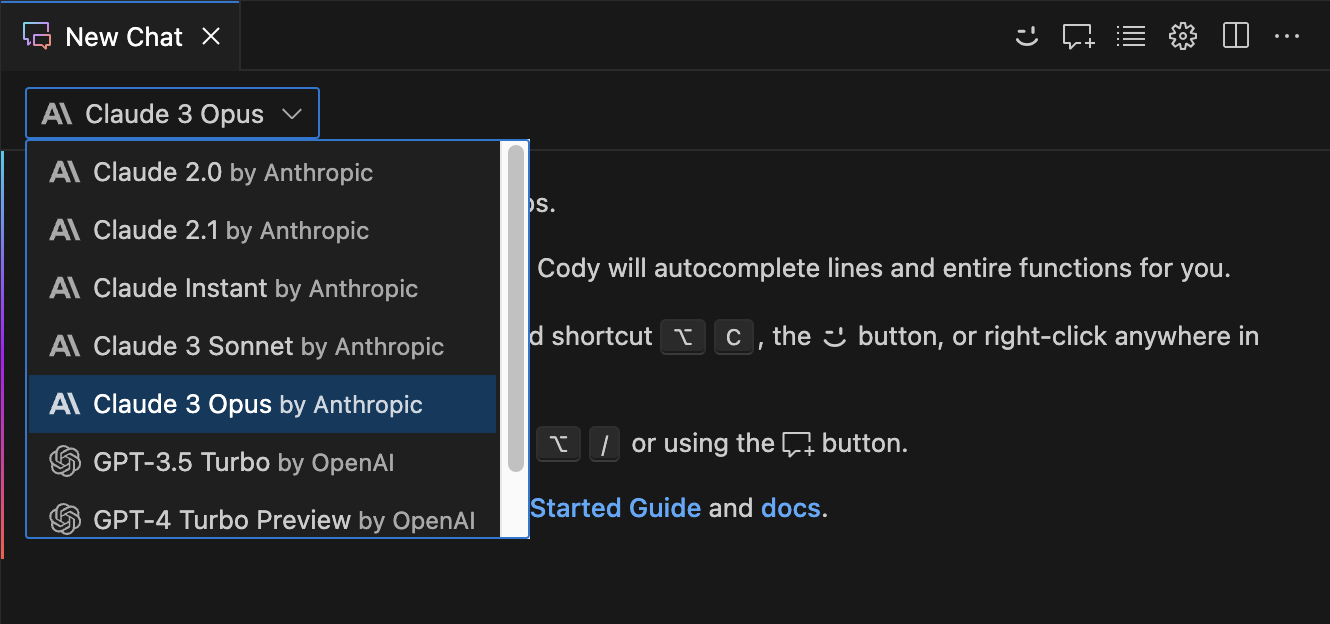
Claude 3 Sonnet is the faster model, but produces answers with a lower level of intelligence.
Claude 3 Opus (recommended) is the most powerful model, providing the highest quality code output and answer quality.
Local Ollama models for chat and commands (experimental)
Cody now supports using Ollama to run local models for chat and commands, available for Cody Pro users. To setup Cody chat to use Ollama:
- Download Ollama
- Launch Ollama (ensure the Ollama logo appears in your menu bar)
- Pull a model down from the Ollama Library (e.g. ollama pull gemma:7b-instruct-q4_K_M )
- In your Cody VS Code extension settings, set cody.experimental.ollamaChat to true
- Open a new chat in Cody
- In the new chat panel, you should see the chat model you've pulled in the dropdown list
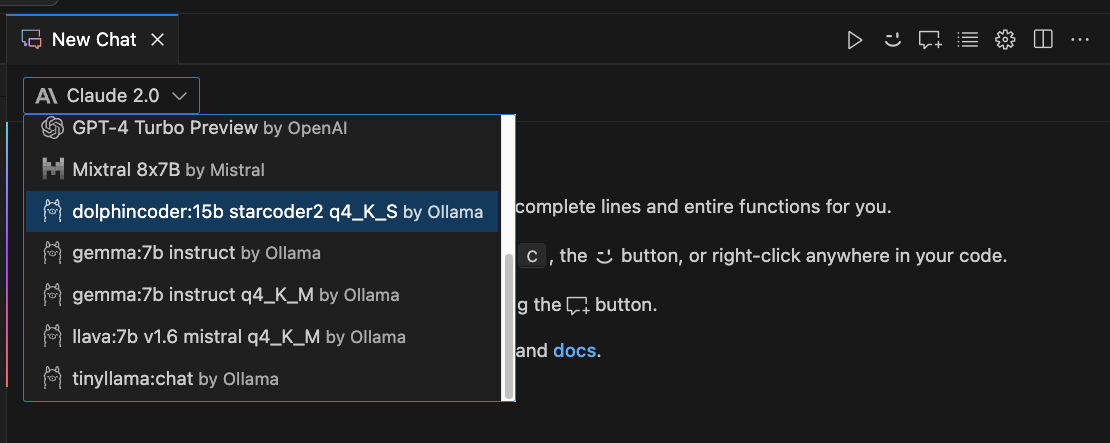
@-file now supports line numbers
You can now specify line numbers when you @-mention files in chat, by appending ':line-range' after the file name. This allows you to @-mention parts of large files, and makes it clearer what code Explain Code and Find Code Smells commands are referring to.
Keybinding support for custom commands
You can now bind keyboard shortcuts to quickly run your custom commands. To bind a keyboard shortcut, open the Keyboard Shortcuts editor and search for "cody.command.custom." to see the list of your custom commands.

Automatic updating of local search index
The local search index, used by Cody Free & Cody Pro, now automatically updates every 24 hours to ensure up-to-date code is used for context, reducing the number of confusing or inaccurate responses.
See the changelog and GitHub releases for a complete list of changes.
Cody wouldn’t be what it is without our amazing contributors 💖 A big thank you to everyone who contributed, filed issues, and sent us feedback.
As always, we value your feedback in Discord and GitHub . Happy Codying!
To get started with Cody install it from the VS Code Marketplace
Previous release: Cody for VS Code v1.6.0
Get Cody, the AI coding assistant
Cody makes it easy to write, fix, and maintain code.
Advertisement
Trump Says Some Migrants Are ‘Not People’ and Predicts a ‘Blood Bath’ if He Loses
In a caustic and discursive speech in Ohio, former President Donald J. Trump once again doubled down on a doomsday vision of the United States.
- Share full article

By Anjali Huynh and Michael Gold
Anjali Huynh reported from Vandalia, Ohio, and Michael Gold from New York.
- Published March 16, 2024 Updated March 18, 2024
Former President Donald J. Trump , at an event on Saturday ostensibly meant to boost his preferred candidate in Ohio’s Republican Senate primary race, gave a freewheeling speech in which he used dehumanizing language to describe immigrants, maintained a steady stream of insults and vulgarities and predicted that the United States would never have another election if he did not win in November.
With his general-election matchup against President Biden in clear view, Mr. Trump once more doubled down on the doomsday vision of the country that has animated his third presidential campaign and energized his base during the Republican primary.
The dark view resurfaced throughout his speech. While discussing the U.S. economy and its auto industry, Mr. Trump promised to place tariffs on cars manufactured abroad if he won in November. He added: “Now, if I don’t get elected, it’s going to be a blood bath for the whole — that’s going to be the least of it. It’s going to be a blood bath for the country.”
For nearly 90 minutes outside the Dayton International Airport in Vandalia, Ohio, Mr. Trump delivered a discursive speech, replete with attacks and caustic rhetoric. He noted several times that he was having difficulty reading the teleprompter.
The former president opened his speech by praising the people serving sentences in connection with the Jan. 6, 2021, riot at the Capitol. Mr. Trump, who faces criminal charges tied to his efforts to overturn his election loss, called them “hostages” and “unbelievable patriots,” commended their spirit and vowed to help them if elected in November. He also repeated his false claims that the 2020 election was stolen, which have been discredited by a mountain of evidence .
If he did not win this year’s presidential election, Mr. Trump said, “I don’t think you’re going to have another election, or certainly not an election that’s meaningful.”
Mr. Trump also stoked fears about the influx of migrants coming into the United States at the southern border. As he did during his successful campaign in 2016, Mr. Trump used incendiary and dehumanizing language to cast many migrants as threats to American citizens.
He asserted, without evidence, that other countries were emptying their prisons of “young people” and sending them across the border. “I don’t know if you call them ‘people,’ in some cases,” he said. “They’re not people, in my opinion.” He later referred to them as “animals.”
Border officials, including some who worked in the Trump administration, have said that most migrants who cross the border are members of vulnerable families fleeing violence and poverty, and available data does not support the idea that migrants are spurring increases in crime.
Mr. Trump mentioned Bernie Moreno, his preferred Senate candidate in Ohio and a former car dealer from Cleveland, only sparingly. Though he has Mr. Trump’s endorsement, Mr. Moreno, whose super PAC hosted Saturday’s event, has struggled to separate himself in a heated Republican primary contest to face Senator Sherrod Brown, Democrat of Ohio, this fall. Mr. Trump was redirected from a planned trip to Arizona to appear with Mr. Moreno as a last-minute push.
Mr. Trump issued vulgar and derogatory remarks about a number of Democrats, including ones he often targets, like Mr. Biden and Fani Willis, the Atlanta prosecutor overseeing his criminal case in Georgia, as well as those widely viewed as prospective future presidential candidates, such as Gov. Gavin Newsom of California and Gov. J.B. Pritzker of Illinois.
Mr. Trump called Mr. Biden a “stupid president” several times and at one point referred to him as a “dumb son of a — ” before trailing off. He also compared Ms. Willis’s first name to a vulgarity, called Mr. Newsom “Gavin New-scum” and took jabs at Mr. Pritzker’s physical appearance.
The Biden campaign issued a statement after the event claiming that Mr. Trump’s comments doubled “down on threats of political violence.”
“He wants another January 6, but the American people are going to give him another electoral defeat this November because they continue to reject his extremism, his affection for violence, and his thirst for revenge,” said James Singer, a spokesman for the Biden campaign.
Steven Cheung, a spokesman for Mr. Trump, clarified that Mr. Trump was talking about the auto industry and the economy, not political violence, and wrote in a statement that “Crooked Joe Biden and his campaign are engaging in deceptively, out-of-context editing.”
Mr. Trump’s sharp words were not reserved for national politicians: He briefly took aim at one of Mr. Moreno’s primary opponents, Matt Dolan, a wealthy Ohio state senator who has been surging in recent polls. Returning to his prepared remarks, Mr. Trump said he did not know Mr. Dolan but depicted him as “trying to become the next Mitt Romney.”
“My attitude is anybody who changes the name from the Cleveland Indians to the Cleveland Guardians should not be a senator,” Mr. Trump said, referring to the professional baseball team that Mr. Dolan’s family holds a majority stake in.
When Mr. Moreno was briefly called back onstage toward the end of Mr. Trump’s remarks, he praised the former president as a “good man.” But Mr. Moreno did not explicitly remind the crowd to support him in his Senate bid on Tuesday. Mr. Trump, for his part, said Mr. Moreno was a “fantastic guy.”
Mr. Trump’s campaign speeches generally swing between scripted remarks and seemingly off-the-cuff digressions. On Saturday, he acknowledged struggling to read the teleprompter as he tried to quote statistics on inflation.
“Everything is up: Chicken’s up, bread is up and I can’t read this damn teleprompter,” Mr. Trump said. “This sucker is moving around. It’s like reading a moving flag in a 35-mile-an-hour wind.”
Then, Mr. Trump, who before his presidency was known in New York for refusing to pay his bills to a wide range of service providers, joked about not paying the teleprompter company.
“Then they say Trump’s a bad guy, because I’ll say this: Don’t pay the teleprompter company,” he said as the crowd laughed. “Don’t pay.”
Anjali Huynh , a member of the 2023-24 Times Fellowship class based in New York, covers national politics, the 2024 presidential campaign and other elections. More about Anjali Huynh
Michael Gold is a political correspondent for The Times covering the campaigns of Donald J. Trump and other candidates in the 2024 presidential elections. More about Michael Gold
Our Coverage of the 2024 Presidential Election
News and Analysis
Former President Donald Trump sought to defend his declaration that the United States would face a “blood bath” if he lost in November , saying — as his campaign had previously — that he had been referring only to the auto industry .
In an interview on Fox News, Trump doubled down on his description of immigrants as “poisoning the blood” of the country, language that echoes Hitler.
President Biden’s re-election campaign said that it had raised more than $53 million in February together with the Democratic Party, an influx of cash that is expected to widen the Democrats’ money advantage against Trump .
Nicole Shanahan — a Bay Area lawyer and investor who was once married to the Google co-founder Sergey Brin — has emerged as a top candidate to be Robert Kennedy’s running mate on his independent ticket.
The War Over Disinformation: Claims by Trump and his allies that they are being censored online have successfully stymied the effort to filter election lies .
An Alternate Reality Pitch: The war in Ukraine. Hamas’s attack on Israel. Inflation. Trump has insisted that none would have occurred if he had remained in office after 2020. Here’s an assessment of his assertions .
Wooing Black Voters: Even as he repeatedly traffics in stereotypes about Black Americans, Trump is counting on them, and aggressively courting them , to help him win back the White House in November.
Economic Battle Lines: Biden’s $7.3 trillion budget for the next fiscal year offered the nation a glimpse of the diverging directions that retirement programs, taxes, trade and energy policy could take depending on the outcome of the election.

IMAGES
VIDEO
COMMENTS
Catamarans and trimarans have notoriously small jibs, making them grossly underpowered in light breeze. A screecher is larger, higher clewed, and fuller than a genoa but flatter than a typical code zero. 3. A code zero is strictly a racing sail. Cruisers of all ilks have taken to the sail for its range and ease of use.
The Code 0 for cruising monohull sailboats is a full sail, shaped like an asymmetrical spinnaker, and furls easily on a top-down furling system. While the midgirth of the racing Code 0 is restricted to at least 75% of the foot length, the cruising version of the sail has no restrictions, giving the sailmaker a lot of leeway in design.
We had high hopes for the Code Zero...the sail is an incredibly popular setup on newer boats. The idea of making good time with the sails instead of firing u...
A Code Zero has a mid girth of 75% of the foot length, so it measures as a spinnaker but has a much bigger area than a genoa. The optimal wind speed for this sail is 3 to 18 knots true wind speed and in lighter winds, you can carry this sail up to a 45-degree true wind angle. Typically they are designed to be flatter than a spinnaker and have a ...
You can typically use a cruising code zero from 70° true wind angle (TWA) in very light air up to 110° TWA in 15+knts. Ultimately it depends on the righting moment of your boat and how comfortable you are with how much the sail may make your boat heel in significant breeze or at tighter angles. Most cruising code zeros are designed primarily ...
The Code 0 is a kind of large, very light genoa that can be sent in the manner of an asymmetrical spinnaker or as a gennaker. This sail allows to tighten the wind in very light winds. With blocked materials such as laminated fibres and a fairly flat design you will almost be able to sail upwind. On the other hand, a slightly flexible fabric and ...
A Code Zero is tacked ahead of the genoa - either on a sprit or on the anchor's bow roller. Furling sails require high tension to furl effectively, so if the sail sets on a sprit it must be well supported or very robust. Obviously the roller drum must clear the other genoa's furler drum. The head swivel attaches to the spinnaker halyard.
The Quantum Code 0 for cruising monohull sailboats is a full sail, shaped like an asymmetrical spinnaker, and furls easily on a top-down furling system. While the midgirth of the racing Code 0 is restricted to at least 75% of the foot length, the cruising version of the sail has no restrictions, giving the sailmaker a lot of leeway in design.
After all, this is how we actually sail! In this video, David defines the parameters of a code zero and discusses the evolution of code sail designs. He dives into Quantum's line of AWA sails and discusses the different models - AWA 40, AWA 60, and AWA 80. Request a quote now or get in touch with one of our sail consultants if you still have ...
Most sailmakers refer to odd numbered sails (A1, A3, A5) as reaching spinnakers and even numbered sails (A2, A4, A6) as downwind-orientated sails. Code Zero sails are most effective between 80 to ...
When we purchased our new Leopard 45 catamaran we selected the OEM Code 0 sail and furler from the Robertson & Caine factory option list. Since then we streamlined and improved the entire system, making it more functional, safer and able to be single-handed. The value of this simple conversion is that you can pull the sail in under any reasonable conditions you may have it deployed at or could ...
Modern cruising catamarans and trimarans have unique requirements in terms of sail design and construction. The reason for this stems from the stability ... For long reaching or downwind passages, on the other hand, a Code 0 or asymmetrical spinnaker is your best bet for generating the necessary horsepower to achieve good average speeds. The ...
It has a nearly straight luff, a mid girth about 60-65% of the sail's foot length. This sail is closer in shape to a traditional drifter than a spinnaker. Cruising Code Zero (left) and a Cruising Spinnaker (right). The Code Zero is a much flatter "triangular" shaped sail that is designed for close reaching. The Cruising Spinnaker is bigger and ...
Cruising Code Zero for overlapping boats. Optimized for boats with overlapping genoas. Apparent wind angle: 60°-140°. Apparent wind speed: 1-16 knots. Approximately 70-75% of the sail area of a full-size spinnaker. Mid girth measurement 75-85% of foot length. A reaching sail that compliments a cruising spinnaker.
Construction Symmetric and asymmetric off-wind cruising sails are often made of nylon fabrics in .75-ounce, 1.5-ounce, 2.2-ounce (sometimes called Force 9) weights. Polyester fabric, such as Dacron, is often used for Code 0 sails in weights that can range from 1.9 ounce through 4.5 ounce.
Setting & furling the Code 0 on my catamaran "CATMANTOO" using an endless line furler on a launching bowsprit. Single handed sailing, Easier with a little mo...
Code 0's can be also Optimized to 60 - 140 degrees apparent wind angle (AWA), Approximately 70-75% of the sail area of a full-size spinnaker. Mid girth measurement 75-85% of foot length. Our code 0's are CAD drawn and presented to you before production Code 0's come with 4 color option standard (certain cloths have limited color choice)
How easy is it to set up a code zero single handed on a modern catamaran? See for yourself as I film the owner of Lagoon 42 Wanda doing it on a sunny day in ...
A bigger drum provides more torque / power which will be useful for a heavier, larger code zero. A smaller drum delivers more speed - an essential component to successful top-down furling (N.B. the smaller the drum the more power and line speed you need to be able to generate from either your winches or your arms - depending on boat size!) Lock ...
Catamaran type Code 0's are called Screechers and specially made for catamarans. Screechers are designed a little more flat than a code 0, due to the design of the Catamaran and their sails. Fareast sails Screechers are fully customized with your sailing style in mind. Screechers are radial cut for optimal performance.
An architectural achievement, the Lagoon 42 is a catamaran with an ambitious design and attractive interior spaces. Step aboard and set sail for an ocean of serenity and pleasure. ... Code 0 (opt.) 68m² / 732 sq.ft; Motorisation - standard 2 x 57 CV / HP; Water tank capacity 300 l / 79 US gal; Fuel tank capacity 600 l / 159 US gal;
To decarbonize the electrical grid, companies are finding creative ways to store energy during periods of low demand. A carbon dioxide storage prototype built by Energy Dome in Ottana, Sardinia ...
Last year, we introduced search by target frameworks on NuGet.org, allowing you to filter your search results based on the framework(s) that a package targets.
Its operators made a newsroom announcement, but the outcome is uncertain since the owner has signaled it wants the magazine to endure.
The term "code zero" was first coined in the 1998-99 Whitbread Round the World race to describe an asymmetric spinnaker that was capable of reaching at very close — almost upwind— angles. These racing sails were limited for many years by rules which specified a minimum girth (70-75% of the foot
Cody for VS Code v1.8.0 is now available and includes support for Claude 3, local Ollama models, @-mentioning line numbers, keybindings for custom commands, and automatic updating of the local search index.. Support for Claude 3. For Cody Pro users, Cody now supports the new Claude 3 models Opus and Sonnet for Chat, Code Editing and Commands.. Claude 3 Sonnet is the faster model, but produces ...
The former president opened his speech by praising the people serving sentences in connection with the Jan. 6, 2021, riot at the Capitol. Mr. Trump, who faces criminal charges tied to his efforts ...